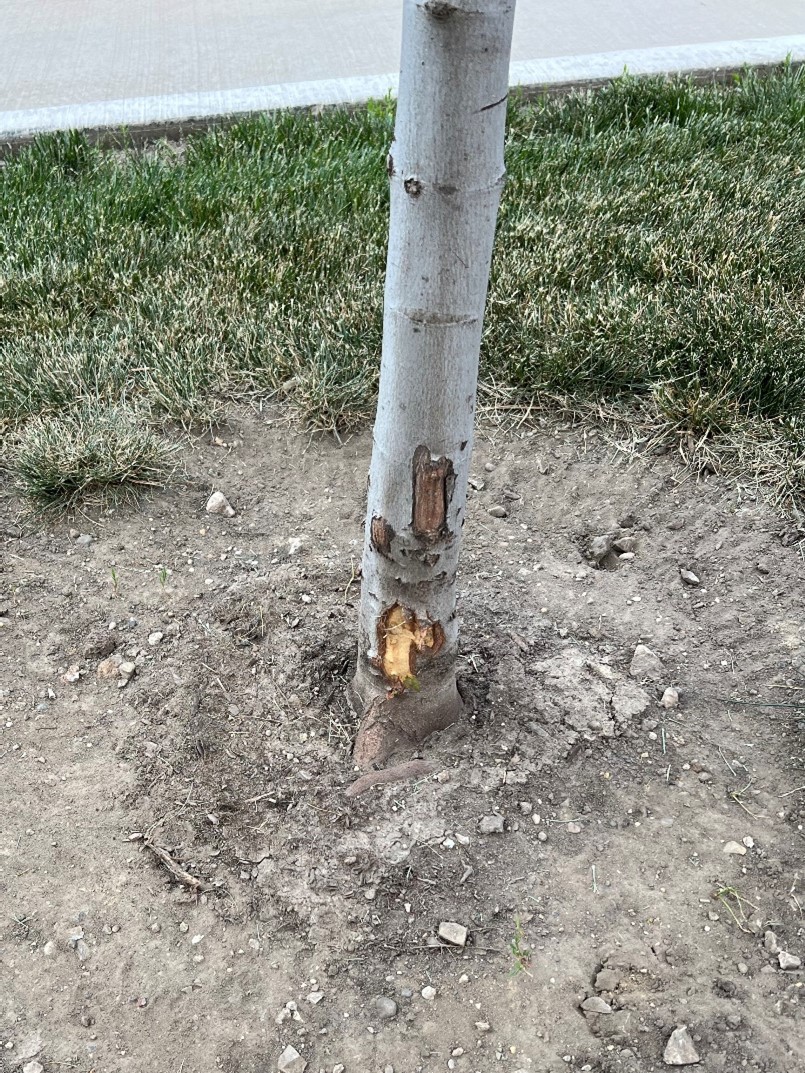Issue 4, June 20, 2023
Mower Blight
We’ve all likely experienced the following scenario. While mowing, you notice some tall grass growing near the base of a tree. You move the mower slightly closer to trim the overgrown grass despite knowing better. While you successfully cut the grass, your mower deck also managed to gouge through the tree’s bark causing permanent mechanical injury. While completely avoidable, this type of tree injury is all too common. So much so that many refer to it as mower blight.

Recent mower injury on a young tree, Travis Cleveland, University of Illinois.
How much injury can a mower do? As mower decks and trimmers cut through the tree’s bark, they damage the vascular tissues essential for conducting sugars and water through the tree. The immediate impact depends on how much of the tree the mower injured. If 25% or less of the bark around the trunk has been damaged, the tree will likely recover, though it may show some stress.

Severe mower injury on a parkway tree, Travis Cleveland, University of Illinois.
Long-term impacts of the injury are harder to predict. Bark also serves as an important barrier that protects the tree’s inner tissues from insects, pathogens, and desiccation. Wounded bark exposes the inside of the tree to organisms that decay the wood. After being wounded, the tree begins to compartmentalize the wounded area to prevent and contain any decay. However, compartmentalization is a slow process that still allows organisms plenty of time to enter the tree. Additionally, the ability to compartmentalize decay varies among tree species. Trees that do not successfully compartmentalize may develop advanced stages of decay resulting in structural defects and necessitating the tree’s removal.
Your first action should be never to use a mower, string trimmer, or other equipment near the tree trunks. If you need to trim vegetation growing near a tree, use hand-held shears instead. Create a safe zone around the base of the tree that will not require mowing. This area should be mulched and free of weeds and turf. Ground covers are another option that for that space.

Mulch creates a mower-free zone around the base of young trees, Travis Cleveland, University of Illinois.
There are not many options for injured trees. Wound-sealing sprays and paints won’t help. There is some evidence suggesting they may prevent or hinder the compartmentalization process. They may also trap moisture and seal rot organisms against the open wound. Instead, use the previously mentioned strategies to prevent further injury.
Author:
Travis Cleveland